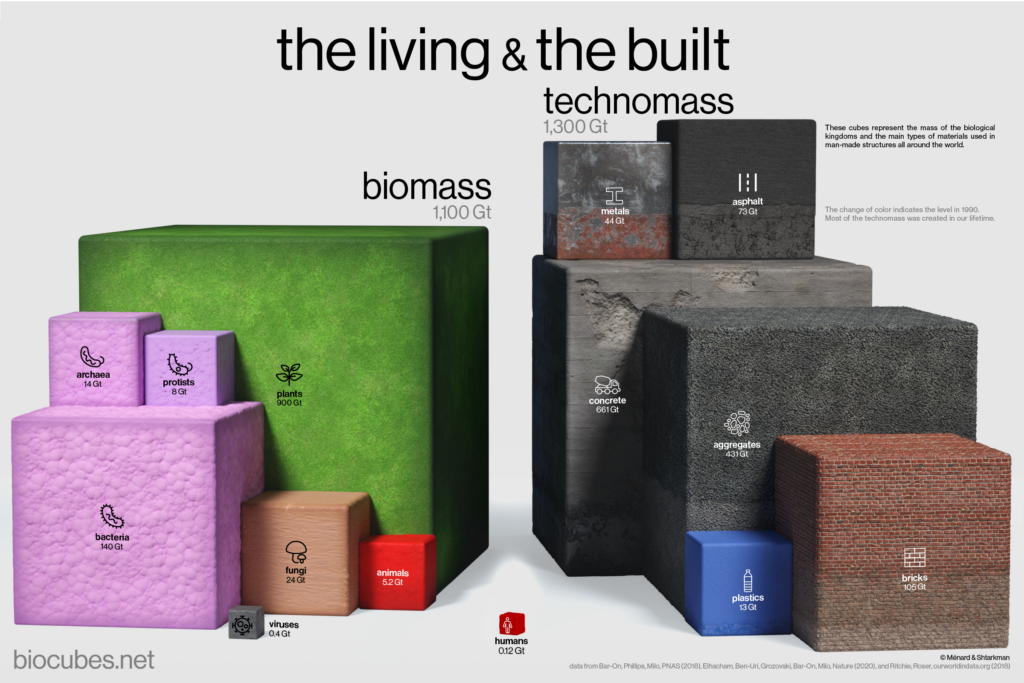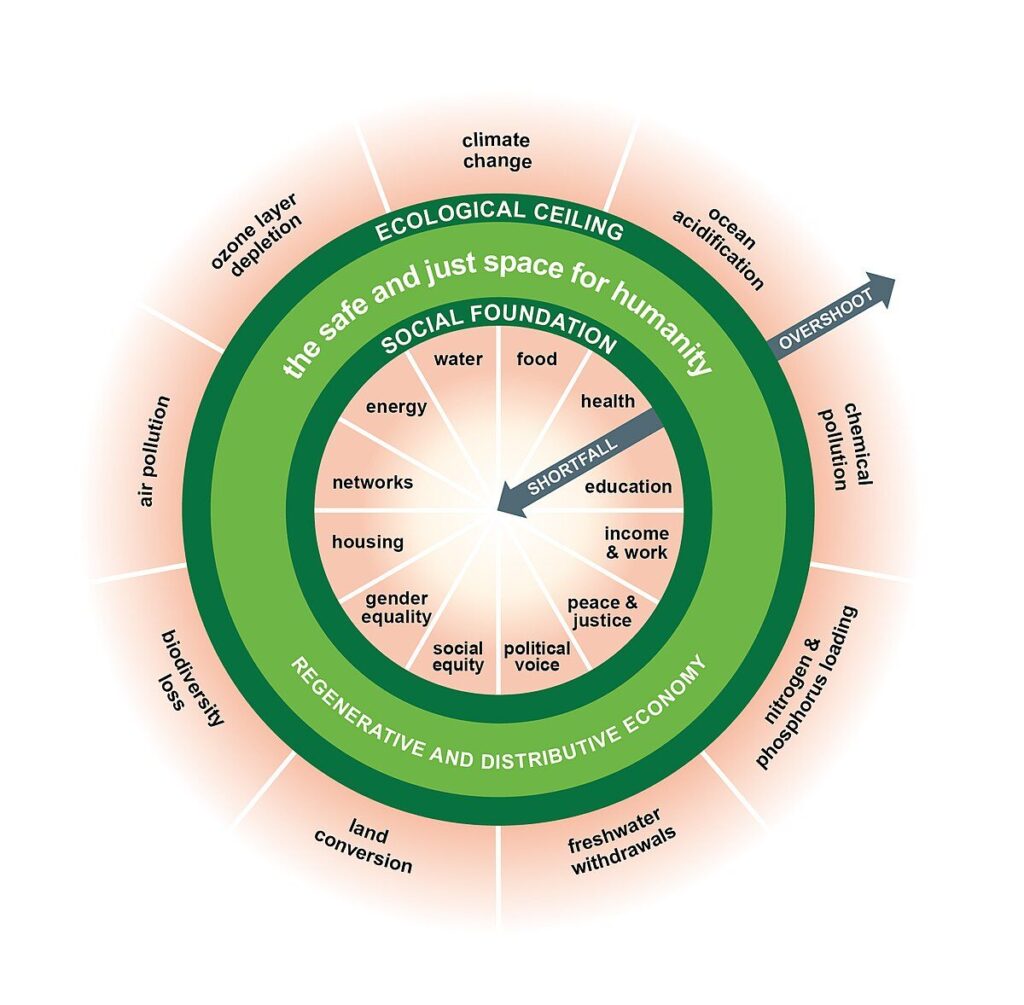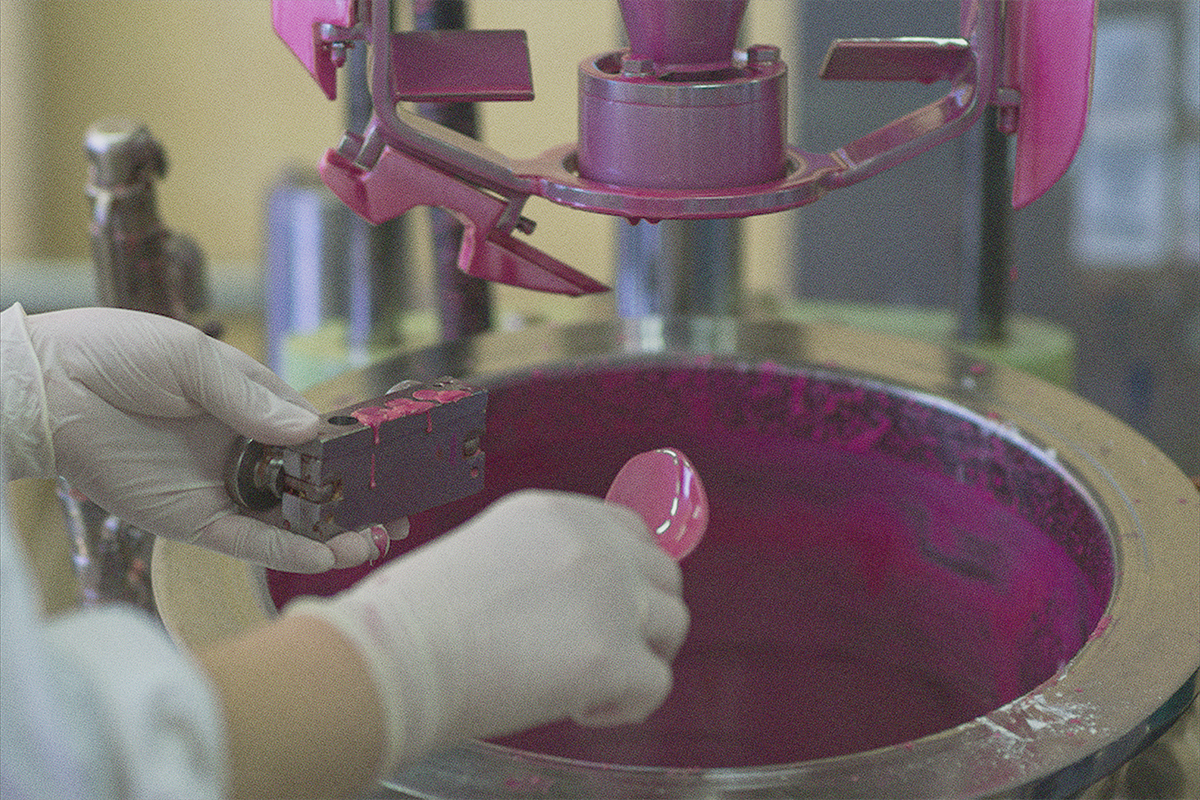 Policy Brief + Recommendations
Policy Brief + RecommendationsAs sustainability professionals, we face a sobering reality: every day, materials are extracted, manufactured, used, and discarded at a rate that outpaces the Earth’s ability to regenerate.1
Our global ecological footprint has reached unprecedented levels.2 Humanity’s total material demand–our buildings, roads, machines, and products–now outweighs all living things on Earth.3 These aren’t just statistics, they are a wake-up call for everyone working in sustainability and materials management.

I’ve spent the last two decades working on climate impact and waste assessment for companies and governments across the United States, and have watched as local sustainability efforts have flourished while the global environmental picture becomes more and more grim. One of the biggest challenges I’ve seen is that the traditional metrics of sustainability–carbon footprints, waste reduction targets, efficiency gains–are designed to drive localized, regional progress. These measures of ‘success’ overlook a crucial reality: when we cut costs and resource use in one place, consumption often increases somewhere else in the world. As sustainability professionals leading the charge for a more just and regenerative future, our biggest challenge today is not merely advancing existing measures of ‘success.’ Instead, we must fundamentally reimagine our relationship with an economic system that prioritizes growth above all else and shift toward one that values health through balance and harmony with nature. When the planet is healthy, we are healthy.
This reality is pushing sustainability leaders to ask harder questions: How can we create genuine prosperity while respecting Earth’s ecological limits? What would it look like to build a materials economy that serves both people and planet? The answers require us to examine not just how we manage materials, but how we think about growth itself.
The Limits We Face
There is already a great body of knowledge on “the ability to thrive as a society, while respecting biophysical limits.”4 This wisdom, however, stems from ways of living and being that do not center economic size as a marker of societal well-being. In contrast, the goal of most economies around the world today is to simply grow.
The Center for the Advancement of the Steady State Economy recently showed that the world’s seven largest economies have enshrined “economic growth” as a goal in and of itself, detached from any kind of social or well-being metrics.5 But economic growth doesn’t happen in a vacuum: our environment, people, and communities are all impacted by macroeconomic decisions. Considering this, three key issues emerge that challenge our perception of growth’s ‘success’:
- First, there are ecological constraints. The global economy must operate within Earth’s ecological limits – thresholds for resource extraction, land use, and pollution that we are currently exceeding. We simply cannot sustain current levels of ecological demand.
- Second, there are efficiency limitations. Our current materials economy is deeply interconnected: when one company reduces its material use, the saved resources are typically invested into other parts of the economy, driving further growth and consumption. Time and experience have proven that efficiency gains do not actually reduce resource use, unless they are paired with a commitment to limit demand.6
- Finally, there are equity concerns. The benefits and burdens of our materials economy are not shared equally. While ~10% of global society controls 90% of the wealth,7 billions still lack access to basic resources for a dignified life.,8,9 Shifting our economy towards alternative and more efficient technologies alone will not address this fundamental imbalance.
Let’s dive a little deeper into how these issues affect people and our planet:
Earth’s Limited Resources
We must acknowledge and work within Earth’s limits to economic growth. Our collective ecological demands have been outpacing the regenerative capacity of our planet since the 1970s.10 Globally, we’ll need to shrink the total size of that demand in order to bring our footprint back in balance with nature.
Humans’ fossil-fueled economy has pushed the global climate past its natural limits: recent highly visible weather events related to our changing climate are symptomatic of pushing past ecological constraints. This isn’t unique to climate–all natural systems have boundaries and it is now time for us to work within the boundaries of a healthy, thriving planet.
Beyond the Efficiency Trap
Efficiency gains must be coupled with limits on total ecological demand. To date, the most common approach for reducing ecological demand has been introducing more efficient technologies: new power plants, more fuel-efficient engines, and ever-smaller computing devices deliver their services with less material input per unit of output. But when we reduce resource use through efficiency, a growth-focused economy uses those saved resources to consume more elsewhere. It’s like squeezing a balloon – the air just moves to a different spot.
The factors that drive ecological change on planet earth are connected to commodity flows that operate across political boundaries, meaning reduced demand in one part of the economy is easily offset by increased consumption in another. For example, the U.S. has reduced its fossil fuel demand over the past two decades, but the global economy has easily reallocated those savings in the planetary push for economic growth. In practice, efficiency gains are often redirected into making more products, feeding a cycle of continuous growth that ultimately leads to more extraction, more waste, and more strain on our planet’s systems.

Illustration by John Mulrow, PhD
Centering Equity
Sustainability strategies must prioritize equity alongside environmental goals. Our traditional, Western understanding of economic growth prioritizes gain for a small subset of the global population. Even if economic growth were intended to benefit all humanity, it has failed in practice.
In his book Less is More: How Degrowth Will Save the World, Jason Hickel presents data showing that while global GDP per capita increased fivefold between 1980-2016, this growth was highly unequal, with only the wealthiest 10% of people seeing their incomes grow at or above this rate. The richest 1% gained disproportionately more, while the vast majority of people experienced minimal economic benefits despite overall growth.11 This pattern repeats even within high-income countries, as Matt Orsagh, a post-growth finance advocate, has pointed out. In the US, it is also the wealthiest 10% of people that have accumulated the majority of economic growth for themselves in recent decades.12 Clearly, there is a need to rebalance and redefine economic flows so that when and where growth happens it benefits those truly in need.
New Metrics for a Healthy, Thriving Planet
Kate Raworth’s Doughnut Economics concept has provided a framework for seeking social and environmental sustainability without prioritizing growth for growth’s sake. The doughnut diagram represents a safe and just operating space for humanity, with the inner boundary representing minimum requirements for human well-being (the social foundation), and the outer boundary representing planetary systems impacted by economic activity (ecological ceiling).
The reality is that social foundation metrics are not being met for many across the world and yet we are exceeding planetary boundaries, atmospheric CO2 levels being just one of several ecological emergencies. Raworth’s work has been effective at helping sustainability professionals break from efficiency as a marker of environmental impact reduction, instead pairing planetary-scale impact metrics with socioeconomic ones like equity and access.

Well-Being
New ways of thinking about growth bring fresh focus to the fundamental question of what truly constitutes ‘wealth’ versus ‘well-being.’ While social and ecological metrics provide important global context, numbers alone won’t be enough to persuade a critical mass of environmental advocates and professionals to break from the commitment to growth embedded in most sustainability plans.
To orient away from growth, we’ll need enticing ways to live the good life with less economic throughput. That’s why this reimagining of economics prompts psychological inquiries into the question “how much is enough?”, explorations of indigenous ways of knowing and being, and long-standing critiques of economic development goals aimed at increasing Gross Domestic Product (GDP) as the sole marker of societal well-being.
A Future Beyond Growth
As a sustainability professional on this journey, I constantly remind myself that the path beyond growth is still being trodden. It extends from many places in humanity’s past, and the justifications for redefining growth are not solely technical; ongoing ecological degradation is not in need of ever-more refined climate, energy, and economic forecasting techniques. Economic growth is a social and political commitment embedded in daily life. Challenging it necessitates action in both personal and professional spheres.
Here are some steps to begin:
- Foster Dialogue: Sometimes asking questions like “How much is enough?” or “How can we use less?” are enough to spark a conversation that questions the growth paradigm in a constructive way. You can share and build on writings that critique growth–influential works like Doughnut Economics by Kate Raworth, Less is More by Jason Hickel, and Braiding Sweetgrass and The Serviceberry by Robin Wall Kimmerer provide valuable perspectives. The Degrowth Institute’s discussion toolkit also offers practical resources for sparking conversations.
- Integrate Global Contexts: Add a global economic perspective to your projects. For example, consider what happens to financial and resource savings enabled by efficiency measures. Can these savings be reinvested in ways that increase equity or protect the environment, instead of prompting more consumption? What are the risks that resource demand resurfaces elsewhere in the economy? Asking such questions can shift the focus toward systemic change.
- Stay Motivated: Breaking from growth-centric paradigms is crucial for self-regulating our economy within planetary boundaries. Although unprecedented in modern times, this shift promises significant social and environmental benefits and recent summaries in Ecological Economics offer concrete policy proposals.
For those based in the U.S., various organizations—including the Post Growth Institute, CASSE, Arketa Institute, and DegrowNYC—are advancing the movement through discussion, debate, and action.
Sustainability’s next great challenge is to build a smaller, fairer economy that ensures a thriving future for all within the limits of our one shared planet.
Remember, the goal isn’t perfection—it’s progress toward a materials economy that works for both people and planet. Each step we take builds momentum for broader change. The transition to balance our ecological footprint won’t be easy, but it’s essential for a shared future. As sustainability professionals, we have the opportunity–and responsibility–to lead this transformation. By taking these concrete steps within our organizations, we can help create a future where innovation serves the goal of true sustainability rather than limitless growth.
About the Author
John Mulrow, PhD
John Mulrow is Executive Director of the Degrowth Institute and Adjunct Assistant Professor of Environmental and Ecological Engineering at Purdue University. His work is focused on improving environmental assessment methodology through perspectives that prioritize social equity and limits to growth. He holds a PhD in Civil Engineering from University of Illinois Chicago and a BS in Earth Systems from Stanford University.
DEFINITIONS
Ecological footprint: Economic goods and services require inputs that originate from natural systems
Ecological resources include raw materials such as water, fuels, plants, and mineral ores and natural functions such as water flow, photosynthesis, and atmospheric circulation.
Ecological demand is the ecological footprint required to meet human wants and needs.
Ecological constraints are the limits of demand, beyond which certain natural systems become destabilized. These limits can be characterized in many ways but we prefer the Stockholm Resilience Institute’s planetary boundaries framework.
FOOTNOTES
- https://footprint.info.yorku.ca/data/
- https://footprint.info.yorku.ca/data/
- biocubes.net
- https://www.cambridge.org/core/books/exploring-environmental-violence/degrowth-perspective-on-environmental-violence/561C3D8FA140F8EB1EFCE6EDBEE8A46E
- https://steadystate.org/the-economic-priority-of-the-seven-wealthiest-countries-more-wealth/
- See “Banking sustainable consumption’s savings” in https://www.researchgate.net/publication/388491654_Degrowth_and_Sustainable_Consumption
- https://www.credit-suisse.com/media/assets/corporate/docs/about-us/research/publications/global-wealth-databook-2022.pdf
- https://www.activesustainability.com/environment/natural-resources-deficit/
- https://www.sciencedirect.com/science/article/pii/S2542519624000421
- https://footprint.info.yorku.ca/data/
- Hickel, J. (2022). Less is more: How degrowth will save the world. Penguin Books.
- Orsagh, M. (2024, December 16). Degrowth is the Answer | Substack. https://degrowthistheanswer.substack.com/

Habitable’s policy brief, “Buildings’ Hidden Plastic Problem,” reveals stunning statistics about current and projected plastic use in buildings and includes recommendations to reduce plastic pollution—greenhouse gases (GHGs), microplastics, and toxic chemicals—throughout product life cycles.
This policy brief presents highlights from the significant body of science indicating that plastic building materials are contributing to serious health and environmental harms over their life cycle, from fossil fuel extraction to production, use, and disposal. These impacts fall disproportionately on susceptible and marginalized people, including women, children, Indigenous people, low-income communities, and people of color. The brief includes examples of solutions and offers recommendations to strengthen policies that will reduce plastic use in the built environment and associated life cycle harms.
Endorsing organizations:
- Alliance of Nurses for Healthy Environments
- Alaska Community Action on Toxics
- American Sustainable Business Network
- Between the Waters
- Beyond Plastics
- Cannon Design
- Changing Materials/Changing Streams
- Children’s Environmental Health Network
- Cooper Carry
- Defend Our Health
- Earthjustice
- Ecology Center
- Green Science Policy Inst
- Healthy Babies Bright Futures
- Just Zero
- Little Things Matter
- Moms Clean Air Force
- MSR Design
- Planetary Health Alliance
- Plastic Free Future
- Plastic Pollution Coalition
- Safer States
- Science and Environmental Health Network
- Toxic Free Future
Interested in endorsing these policy recommendations? Contact us.
French—lire en français
Spanish—leer en español
English—read in english

This fact sheet highlights the building and construction sector’s significant contributions to global plastic pollution.
Using case studies of flooring products specified in the K-12, healthcare, and affordable housing sectors, the fact sheet introduces opportunities for building practitioners to reduce the plastic footprint of their buildings and emphasizes the impact that one building can make by specifying low/no-plastic products.

Habitable’s report, “Advancing Health and Equity through Better Building Products,” reveals the current state of building materials used, with nearly 70% of typical products in the categories analyzed containing or relying on the most hazardous chemicals.
The results, based on data for Minnesota affordable housing, are consistent with products used in other building types and geographic regions. The report highlights examples of leaders within and beyond Minnesota’s built environment who are already taking action toward safer material choices. It also provides guidance on how the real estate industry can begin working toward a healthier future by “stepping up from red-ranked products”—the most polluting and harmful throughout their life cycle based on Habitable’s research and Informed™ product guidance.
A path towards planetary health is more urgently needed now than ever, but our current materials economy creates rampant pollution, climate change, and growing inequity. Shifting from harmful practices to healthful solutions will require cross-sector partnerships, holistic thinking, and exciting new approaches that reduce the burden of industry on people and our planet.
Watch Habitable’s special Earth Month webinar featuring leading global voices, including:
- Dr. Bethanie Carney-Almroth
- Dr. Veena Singla
- Martha Lewis
Moderated by Gina Ciganik, CEO of Habitable

HBN tested 94 commercially available paint products for the presence of harmful per- and polyfluoroalkyl substances (PFAS), called “forever chemicals”. Approximately 50% of paints tested positive for fluorine, a marker of PFAS. Review the details of our findings and the recommended actions you can take.

HBN and Perkins&Will have released a second report aimed at transforming the way project teams select sustainable, low-carbon products. Building on the first report titled “Embodied Carbon and Material Health in Gypsum Drywall and Flooring,” a second report investigating the intersection of carbon and material health is titled “Embodied Carbon and Material Health in Insulation”.
Insulation is a unique product category that can help reduce a building’s operational carbon emissions by optimizing performance, lowering the energy required for heating and cooling. Those same materials can also negatively impact the environment by releasing greenhouse gasses throughout their life cycle. Insulation can also contain toxic chemicals that migrate into interior spaces. This report provides guidance for designers and architects to choose the best materials that takes materials health and embodied carbon into consideration.
Key Highlights from the reports include:
- Optimized Products for Material Health and Embodied Carbon: The reports show that products improving material health and embodied carbon are available across all the examined product categories: flooring, gypsum drywall, and insulation.
- Screening for Optimized Product Types: Professionals are advised to first screen for optimized product types before selecting specific products. This approach helps teams capitalize on the fact that the biggest improvements can be made by selecting different product types within a product category.
- Navigating Potential Contradictions: Acknowledging that embodied carbon and material health considerations are sometimes contradictory, the reports emphasize the importance of reviewing the provided guidance to make informed decisions.
The reports represent a significant step forward in sustainable design practices, offering actionable insights that empower professionals to make environmentally conscious choices without compromising on carbon or health priorities.

Teresa is Habitable’s Chief Research Officer, leading our research strategies.
Almost every day, news headlines warn us of the dangers of ‘forever chemicals’, known as PFAS, used in the manufacturing of consumer and industrial products. They’re being found in our water, air, fish, and soil across the U.S. and around the globe, and our body tissues, showing up in almost every person in the US. A report by Habitable (formerly Healthy Building Network) examines the presence of PFAS in residential and commercial paint products—and the urgent need to stop their use.
We recently spoke with Teresa McGrath, chief research officer, and the report’s lead author, to discuss the team’s research findings. She shares what industry professionals can do to avoid human exposure, and discusses why—and how—manufacturers can eliminate them from paint formulas altogether.
HABITABLE:
Before we jump into the details of this groundbreaking report, can you share a little bit about yourself and your expertise as it relates to chemical sciences and paint products?
TERESA MCGRATH:
My background is in chemistry and toxicology. My entire career I have focused on green chemistry: the idea of using chemistry to help meet sustainability goals. Before joining Habitable, I led the chemical management program for Sherwin-Williams, one of the largest paints and coatings companies in the world. In that role, I focused on hazard reduction and transparency, and helped business units in meeting sustainability goals. As chief research officer at Habitable, I lead a team of researchers on studies that seek to better understand hazardous chemicals that may be present in or used to make building materials, as well as putting forward recommendations and best practices to reduce or eliminate their impacts.
H:
Habitable’s most recent report delves into the presence of PFAS chemicals in paints. Officially named perfluoroalkyl and polyfluoroalkyl substances–PFAS–are commonly called ‘forever chemicals’. Can you tell us what forever chemicals are and why they’re so harmful?
TM:
PFAS refers to a class of chemicals with over 10,000 different structures. All PFAS are very persistent chemicals. The fluorine-carbon bond of these synthetic chemicals is very difficult to break and this means that they don’t break down on their own once they get into our bodies or into the environment. Given this persistence, they are often referred to in the media as ‘forever chemicals’. These chemicals can also be bioaccumulative, meaning they build up in our bodies, and can be toxic. We don’t yet know all of the potential harm because most of these chemicals have not been tested, however a host of negative health effects have been associated with PFAS including cancer, liver damage, decreased fertility, developmental delays in children, and disrupting the natural hormones in our bodies.
H:
Can you give us an idea of the scale of this problem and why is it so important that we phase PFAS chemicals out of paint products?
TM: Architectural paints coat the inside and outside our homes, schools, and workplaces, making PFAS in paints a potential exposure concern for everyone from those who manufacture and apply the paints to those who occupy painted spaces. They’re a health and environmental concern throughout their lifecycle, from cradle to grave. And while we already know some PFAS are linked to increased health risks, we may just be scratching the surface, as some experts have suggested, we may be underestimating the dangers of these widespread chemicals.

H:
As part of this study, Habitable tested numerous different paint products and brands for the presence of toxic forever chemicals. What were the team’s findings?
TM:
We tested 94 paints for total fluorine (TF), and a subset for extractable organic fluorine (EOF), indicators of PFAS.
We selected paint samples across most brands, price tiers, gloss, base, and colorants. Samples represented eight major paints and coatings manufacturers that together have over 65% of the paints and coatings market share in North America. We found that about 50% of the paints tested positive for these indicators of forever chemicals, the detailed list is included in our report. All tested brands had at least one product that tested positive for fluorine, and at least one product that tested negative for fluorine. And while the overall percentage of PFAS present in these products is generally small (less than 1%), there is no amount of PFAS in paint that can be considered acceptable because of their health implications.
We did reach out to paint manufacturers, but none could provide us with more comprehensive information on the definitive purpose and use of these chemicals in their products. The likely assumption is they’re using these forever chemicals as a surfactant, meaning they are acting as a stabilizer helping the paints to spread and coat more evenly.
H:
According to the report results, there are numerous paint products on the market today that don’t use these harmful additives. Are these chemicals even necessary and is removing PFAS chemicals from paint a relatively easy thing to do?
TM:
While surfactants are critical to a paint formulation, there are other PFAS-free surfactants that are used for the same purpose that are safer, objectively, from an environmental and human health perspective. Half of the paints we tested didn’t show evidence of PFAS, so we know that it’s possible to formulate paint products without it.
H:
What actions should the paint industry and their suppliers take in light of these findings?
TM:
Paint manufacturers need to phase-out all use of intentionally-added PFAS. When removing forever chemicals from formulations, manufacturers should make sure that PFAS are not replaced with other hazardous chemicals such as alkylphenol ethoxylates (APEs).
To avoid regrettable substitutions and facilitate informed material selection, all alternatives must have full chemical hazard assessments. If a paint company doesn’t know the full hazard profile of a chemical or surfactant, they should consult a toxicologist to evaluate that chemical. The ChemFORWARD platform offers tools and data to help companies find safer alternatives.
In addition, manufacturers should publicly disclose all ingredients in their paints, including PFAS use at any concentration. It should be standard practice for all paint manufacturers to tell the public what they’re putting in their products, along with the toxicity profile of every ingredient.
At a high level, industry players can support bans on PFAS and regulations that require more ingredient transparency in the paint sector..
H:
And lastly, how can you source PFAS-free paint products if you’re a consumer, building professional or specifier?
TM:
All this information might feel a little overwhelming, but we have developed two tools to make it much easier. And the good news is, all of the brands we tested had at least one option that tested negative for fluorine. Specifiers can refer to Habitable’s InformedTM paint guidance resource to select safer paints, as well as our downloadable form that can be used to ask manufacturers for a paint that meets the transparency and material health attributes specified by Habitable. By following these tips you can source paint that is free of forever chemicals, and also meets other environmental best practices such as low VOC content and emissions.
Buyers can also advocate for paint companies to do better. Ask paint manufacturers to provide public disclosure of all intentionally added ingredients, using the Health Product Declaration (HPD) or Declare label.
Overwhelming evidence suggests our health and well-being are significantly impacted by the conditions in the environment where we are born, live, learn, work, and play, with some suggesting that our zip codes are better predictors of health than our genetic code.
Also referred to as social determinants of health , these conditions range from access to and quality of education, transport, and health care services to housing conditions and the toxics and pollutants we are exposed to in the neighborhoods we live in.
While definitions may vary around what these conditions are and which should be prioritized, there is general consensus that:
- These conditions exist because of decision-making processes, policies, structures, and practices designed and implemented by humans;
- These conditions create inequities in health, disproportionately impacting low-income families, families living with incomes below the federal poverty level, and people of color, and;
- Cross-sector collaboration is needed to deliver the highest standards of health for all, with special attention given to the needs of those who are at greatest risk.

In alignment with efforts tackling the root causes of health inequities, Healthy Building Network (HBN) entered into a partnership with United Renters for Justice (IX), a nonprofit working to transform the Minneapolis housing system, to reduce tenant exposures to toxic chemicals used in building products. Funded through an Environmental Assistance grant by the Minnesota Pollution Control Agency (MPCA), this collaborative project prioritized toxic exposure reduction in areas designated to be of environmental justice (EJ) concern by the MPCA. EJ concern areas include tribal land and census tracts with higher concentrations of low-income residents and people of color – communities that are disproportionately impacted by toxic chemical exposures and other forms of pollution.
This collaboration provided the unique opportunity to embrace the perspective of tenants in the co-creation of resources to help them make informed decisions about the products used in their housing units and common areas. Specifically, this meant designing resources that would leverage IX’s organization and mobilization skills as well as the structure of a recently established tenant cooperative, “A Sky Without Limits.” Also, it meant increasing information accessibility, for example, through the use of non-technical language and making the resources available in both English and Spanish.
Tenant organizations and other stakeholders can access HBN’s healthier building product guidance at informed.habitablefuture.org and by watching this 10-minute seminar video:
Watch the Seminar (English)
Ver el Seminario (Español)
This high-level, 10-minute recording can be used to educate the general public (e.g., tenant meetings) about the importance of avoiding toxic products. It begins by breaking down myths and misconceptions around the perceived hazards and safety of natural and synthetic chemicals and discusses how toxic products impact individuals and families, especially children, along the lifecycle of products.
By empowering the people most affected by toxic chemical exposures to advocate for and create change in their living conditions, this project creates avenues for creating a safer environment for all. Anyone who influences product purchasing decisions – including manufacturers, building owners, managers, developers, architects, investors, policy makers, and consumers – has the power and responsibility to reduce health inequities for those using or exposed to those products every day. This includes residents, workers, installers, and the communities that surround the facilities where these materials are processed and disposed of. By making material health a priority in your decision-making processes, you’ll be joining efforts to tackle the root causes of health inequities in communities around the world. Visit informed.habitablefuture.org to learn how our building product guidance can help you make better material choices.

Project teams want buildings that are healthy for people and the planet. Two sometimes competing criteria to evaluate the sustainability of building products are embodied carbon and material health.
For this case study, Perkins&Will partnered with Healthy Building Network to identify key drivers of embodied carbon and material health by looking at specific examples of product categories frequently specified in building projects. Using flooring and drywall as examples, this study identifies some examples of where paths toward low embodied carbon and safer materials align and where they conflict.
The goal of this case study is to translate the learning from embodied carbon assessment tools and material health assessment tools into actionable guidance for manufacturers, project teams, and green building programs that will allow them to optimize decisions and promote and select healthier, low-carbon products that advance a circular economy.

 Health
Health
 Pollution
Pollution Equity
Equity